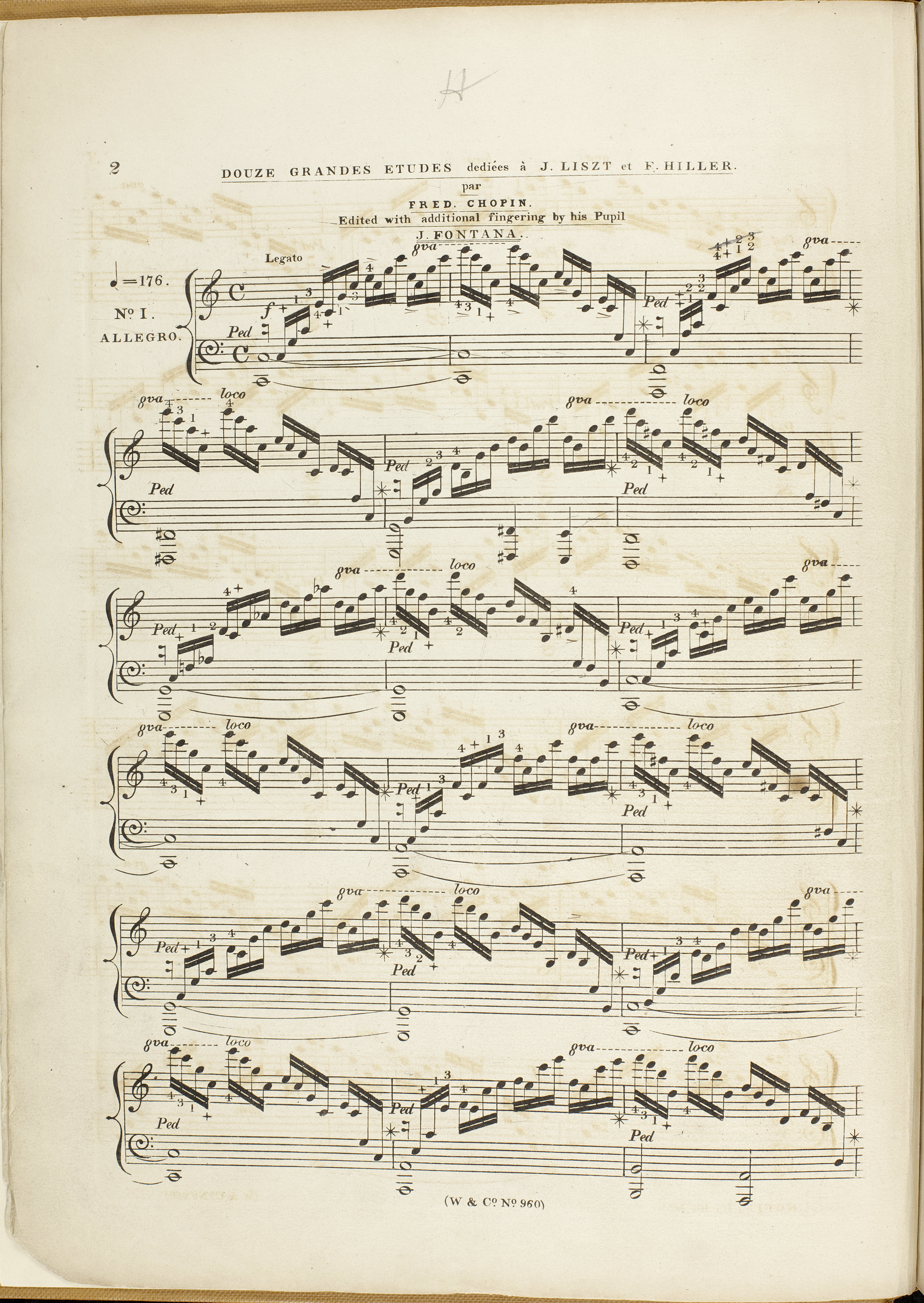



In FE there are no ties sustaining the upper notes of the octaves in bars 7-8, 9-10 and 11-12, as well as 13-14, 73-74 and 75-76. Relevant ties are present in all remaining sources, both earlier (CLI) and later ones (GE and EE). What is more, in the very FE one can see the traces of deleting those ties. There are two basic possibilities:
-
Chopin initially foresaw holding entire octaves, which can be seen in the notation of CLI and in the traces of ties in FE, yet during the works on the Etude's publishing, he changed the concept and ordered those ties to be deleted in the last proofing of FE. That would explain the presence of the ties in GE, which was based on the review copy of FE which did not include the last corrections. The ties in EE could have been added by the reviser or Fontana.
Repeating some notes in octaves or chords and holding others is quite characteristic for Chopin. This kind of ploys can be observed in, e.g., the Fantasy on Polish Airs, Op. 13, bars 99-101 and 103-105 and the Rondo a la krakowiak in F major, Op. 14, bars 386-397; in other contexts also in the Mazurka in D major, Op. 33 No. 3, bars 8-9 and analogous or the Mazurka in B major, Op. 41 No. 2, bars 5 and analogous.
As a musical argument for repeating the upper notes, one could give the reinforcement of the bass note at the change of the chord in the descending part of the passage of the R.H., which, however, would not be consistent. - The only authentic version is the version holding entire octaves, while the deletion of the ties in the last proofreading of FE was a result of a misunderstanding at the time of changing the original brief notation of the octaves with the use of 8 under the upper notes for regular notation. The brief notation in these bars is present in CLI, yet in FE they were probably written in the same way, which is indicated by some graphic inadequacies in the notation of the lower notes of the octaves, which, in this case, were added later. The mere fact of performing the described corrections in print does not yet decide the erroneous deletion of the discussed ties; however, it becomes very probable when taking into consideration the fact that in bars 55-62, matching bars 7-14, a similar correction was not introduced, leaving the brief notation of the sustained octaves.
According to us, the second possibility is much more likely, therefore, in the main text we consider sustaining of the entire octaves in all places. The authenticity of this version does not rise any doubts, which cannot be said of the version of FE, which can be erroneous.
Compare the passage in the sources »
category imprint: Interpretations within context; Differences between sources
issues: EE revisions, Errors in FE, GE revisions, Abbreviated octaves' notation
notation: Rhythm



